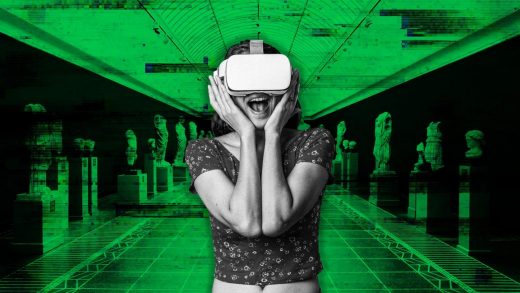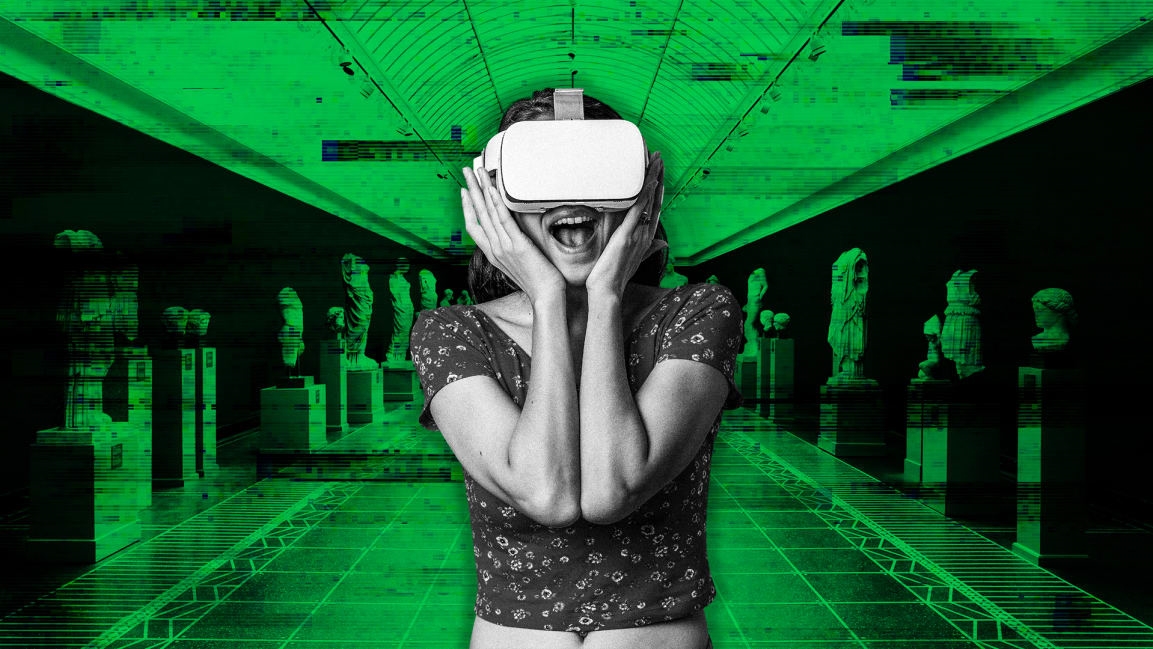COVID-19 devastated arts organizations. But it was also a wake-up call they desperately needed
In 2019, my business partner and I attended a “virtual reality meal” at James Beard House. At the time, we wrote it off as a novelty. While these kinds of events offered innovative one-off experiences, it wasn’t yet clear how emerging technologies would add consistent value to the wider arts industry. Mass adaptation felt a long way off.
We didn’t know then, of course, that the demand for experiential tech was about to explode as people found themselves locked down at home and desperate to access cultural experiences as distractions, comforts, and life rafts amid the chaotic isolation of 2020.
Emerging tech became a lifeline for the arts, and for people seeking connection and distraction.
But now, as the IRL (in real life) world starts to reopen, albeit haltingly, arts organizations face a choice: Will reopening return them to the old normal’s status quo, or will they commit, for the long term, to use emerging tech and digital experiences as a connecting lifeline to audiences who previously weren’t able to access them?
Window on the world
With the closure of museums, events spaces, and restaurants, the arts industry faced an undeniably steep challenge—the effects of which were felt most keenly by working artists. But amid the wreckage, we also witnessed promising innovations from savvy brands and organizations. Well-designed digital offerings not only kept their content accessible to their core audience but also expanded their reach and impact exponentially.
Virtual experiences became a desperately needed window on the world, and to stave off isolation, everyone—from grandmas to toddlers—had to become technologically literate in a very short amount of time.
So while brick-and-mortar doors stayed shut through lockdown, virtual doors flung wide open: You could visit the Louvre from your living room or attend a performance of Hamilton anywhere in the world. Britain’s National Theatre welcomed audiences around the globe to view its cinematically recorded NT Live archive for free during England’s first lockdown, ultimately leading to the launch of a subscription service that will serve those far-flung viewers for years to come.
Virtual reality and augmented reality finally found the direction they were lacking in those halcyon novelty days: Frieze offered users a chance to hang famous paintings on their wall through an augmented reality app, and Spanish artist Felipe Pantone created an Instagram exhibition using a VR graffiti simulator.
Of course, none of this means that live experiences are dead. Just a couple of weeks ago, I took my kids to an Olaf Breuning show, and their wonder at seeing art up close in situ was completely life-affirming. After two years cooped up at home, it was clearer to me than ever before just how powerful and crucial experiencing the arts in real life can be.
Going forward, it shouldn’t be about pitting digital and in-person experiences against each other. Smart organizations will have a foot in each stream. We’ll forevermore need to think about virtual and in-person experiences as two halves of a whole.
London’s Serpentine Galleries and Washington, D.C.’s AFI Docs Festival have taken this new truth to heart: Both are moving forward into the “new normal” with robust hybrid programming strategies to ensure audiences can connect comfortably with their exhibitions in a variety of ways.
Opening doors
Thinking about virtual and IRL experiences isn’t just a matter of abiding by restrictions and playing to audiences’ new preferences and comfort levels—it’s so much more important than that. It’s about inclusivity, diversity, and accessibility, for consumers as well as for creators.
A thoughtfully designed digital offering can level previously steep playing fields, making a range of experiences available to audiences who previously couldn’t afford or physically attend location-based experiences. The knock-on effect here could potentially open doors too long shut to minority creators.
Arts and culture organizations could learn from the wider creative industries in this regard; as a result of the long-standing accessibility challenges highlighted by COVID-19, design and advertising coalitions have launched programs like .movtogether and the Design Community Hub to address the disparity.
Added value
The bridging of digital and physical experiences may be relatively new to mainstream cultural organizations, but retailers have been greasing the wheels on this transformational approach for years now. Think Ikea’s augmented reality Home app, or HP Reveal’s contribution to bridging the gap between home and school for students. An American Institute of Graphic Arts report on design futures aptly observes that in these cases, digital elements add value to the overall experience, rather than simply funneling audiences to some main live event.
And now we’re seeing this same “add-on” approach emerge from more high-end brands. Celebrated fashion designer Thom Browne launched his 2021 collection in a virtual 3D showroom—and while the experience was developed due to COVID-19 restrictions, it certainly doesn’t feel like a forced substitute. Never before have audiences at a runway show had such in-depth access to the details of Browne’s work. In this iteration, viewers can take their sweet time experiencing each piece in 360-degree, high-definition glory. Browne now intends to include a virtual element in future launches, as a valuable component alongside live showings.
Building a bridge
But well-designed digital experiences don’t necessarily have to be slick and expensive. Yes, emerging VR and AR tech has a new, more urgent lease on life, and luxury brands are leading the way for many exciting and important innovations. But organizations without the budget or resources for flashy experiences needn’t feel like they’re doomed to the “old normal.”
One of the biggest successes in digital experience innovations during COVID-19 was the Frick Collection’s Cocktails With a Curator series. Low-tech videos filmed inside curators’ homes generated millions of views, proving, as The New York Times observed, that “online audiences don’t expect a simulation of a gallery visit on-screen. They want a museum experience native to the web—and that can be a little faster, a little less polished, a little more direct.”
At the end of the day, arts and culture organizations need to keep their focus where it’s always been: human connection. And they need to design their experiences—online or in person—with that humanity at the core.
What we have now is an opportunity to expand the definition of what connection with the arts means and who gets to participate in it. We have a chance to design the future of the industry in a way that makes a notable difference for the mental and emotional health of our global community—a priority that should have taken center stage a long time ago.
Amy Globus is the cofounder and creative director at Team, working with clients like Pfizer, the Bronx Museum, and Red Bull Arts.
(29)



